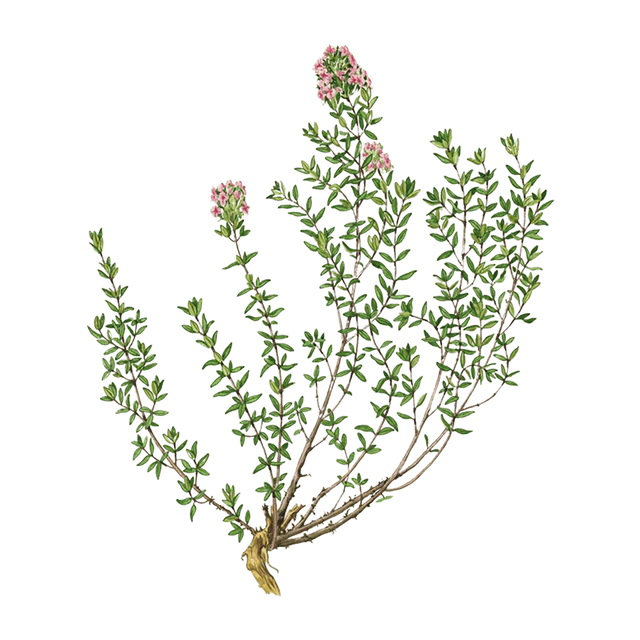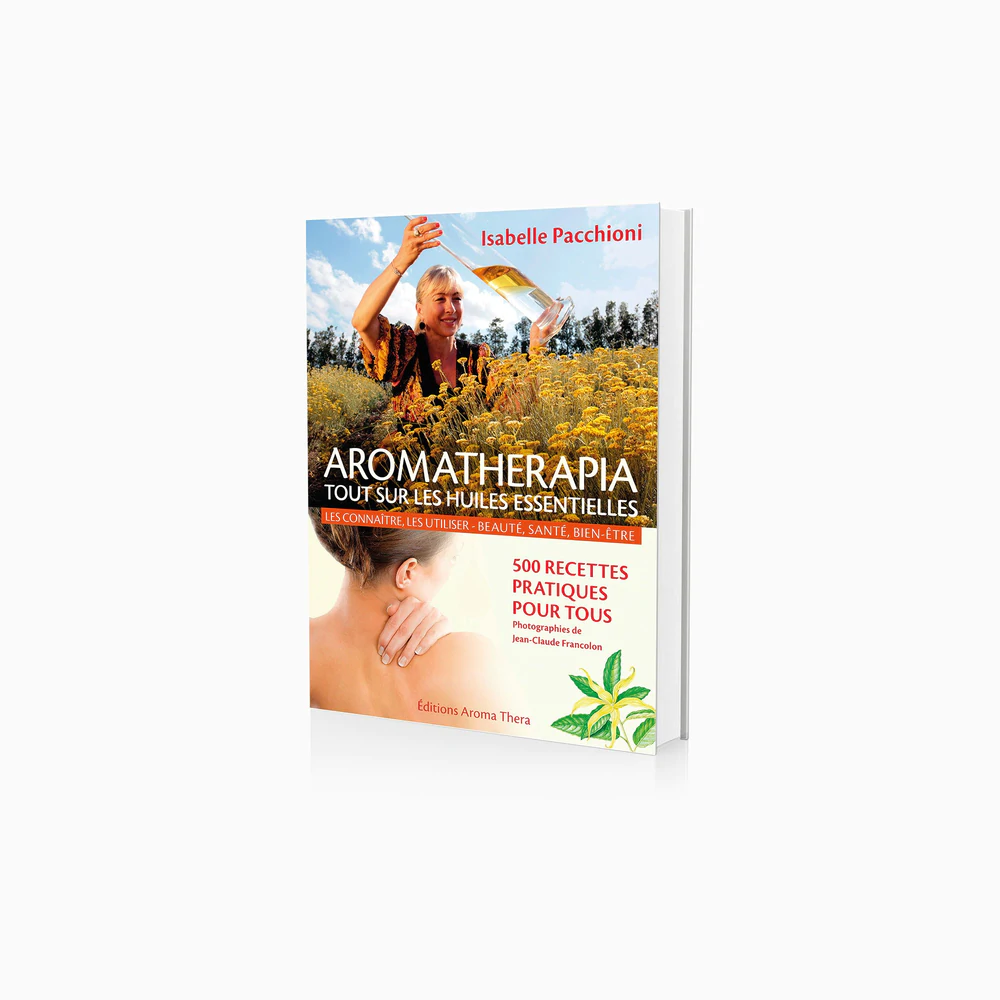
Thyme Thymol
thymus zygis thymoliferum
Seven to thirty centimetres high, it has woody, cylindrical stems arranged in dense clumps or bushes.
Main aromatic molecules: Phenols (thymol, carvacrol), monoterpenes (paracymene), monoterpenols (linalool, terpinene-4-ol).
Family: Lamiaceae.
Producing organs: Flowering tops.
Yield: 1.7 to 2.5kg of essential oil per 100kg of flowers.
Equivalence: 1ml → 32 drops (dosage calculated for a calibrated dropper European Pharmacopoeia).

Bath

Skin application

Oral route
It is also an immunostimulant and general tonic; as such, it is recommended for flu-like conditions and fatigue (overwork, burn out, general or immune fatigue, convalescence).
Dilute 5 drops of thyme essential oil in 1 teaspoon of sweet almond vegetable oil. Massage the soles of the feet with the mixture, 2 or 3 times a day, for 4 or 5 days. From the age of 12.
Flu condition
Sweeten a warm lemon juice with 1 drop of thyme essential oil and 1 drop of linalool thyme essential oil diluted in 1 teaspoon of honey. From 15 years of age.
Warts
Carefully apply 1 drop of thyme essential oil and 1 drop of lemon essential oil on the wart with a cotton bud, without overflowing. Repeat twice a day until the wart has completely disappeared. From the age of 12.
Always ask your pharmacist for advice.
Do not use in: pregnant or breast-feeding women, children under the age of twelve years, persons allergic to one of the components (geraniol, linalool, limonene), subjects with asthma without the advice of an allergologist before the first use, subjects with epilepsy, pure taken orally, in persons with a history of gastritis, peptic ulcer, viral hepatitis B, C or D.
Thymus satureioides, Spanish thyme (Thymus mastichina), wild thyme (Thymus serpyllum).


AROMATHERAPIA
Extracts from the book ’Aromatherapia – All about essential oils’, by Isabelle Pacchioni, watercolors by Patrick MORIN, Aroma Thera Editions . Extracts from the book ’41 essential oils essential for treating yourself differently’ and ’48 essential oils which every home needs to be healthy’ by Isabelle Delaleu and Isabelle Pacchioni, Publications of the Mandadori France group. Botanical illustrations by Agathe Haevermans.
The properties, benefits and method of use are given for information; they cannot in any case constitute or replace medical information that only health professionals can provide. For any use of essential oils for therapeutic purposes, please consult your GP or pharmacist.
Fri leverans
Fri leverans vid köp över 500kr
Kontakt
Kontakta oss så hjälper vi dig!
Herbarium
Lorem ipsum dolor
Alla våra produkter
Alla produkter finns att hitta på hemsidan